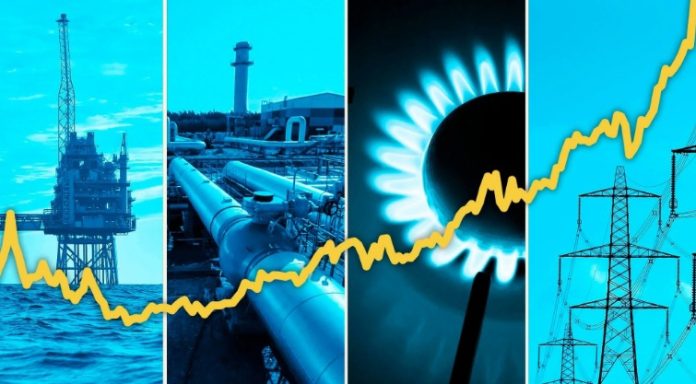This year’s heating season in Europe started on 7 November with tanks full to capacity: with the onset of cold weather, EU gas storage facilities were almost 100% full, IntelliNews reports.
Moreover, the Europeans are delaying drawing gas from their reservoirs as demand exceeds imported pipeline gas via Ukraine and Turkey. They continue to buy imported LNG from countries such as the US and Qatar to put aside excess reserves in reservoirs for as long as possible.
The gas reservoirs themselves cannot fully supply Europe for the entire winter period. The system has been designed so that during the summer months, when demand is low, excess pipeline gas is stored in the reservoirs, while in winter demand increases and this extra gas is withdrawn from the reservoirs. However, the stored gas only covers excess demand due to cold weather, not all demand. In cold winters, the reservoirs barely cover the really large excess demand.
The entire structure of the European energy market has changed significantly over the past two years. The gas reservoir system was built on the assumption that Russia would continue to supply gas to Europe steadily throughout the winter; surpluses are stored in the warm months and spent in the cold months. What has changed is that the amount of gas Russia used to supply has been reduced by around 150 billion cubic metres and will be around 25 billion cubic metres this year. The reservoirs do not and cannot hold the missing 125bn cubic metres that disappeared from the system after the Nord Stream 1 and 2 pipelines were damaged last September.
Europe imported 130bn cubic metres of LNG last year to cover the shortfall and LNG remains the most important alternative gas source to meet Europe’s heat and power needs this year. However, LNG remains a volatile business and there is no certainty that there will be enough production to meet Asia’s and Europe’s LNG needs while demand in both markets is strong.
As winter begins, gas consumption typically peaks with the onset of cold weather in the Northern Hemisphere, when households and office buildings are forced to switch on the heating. However, looking at gas prices this year, that impression won’t be the case, with European futures falling to their lowest level since early October, Bloomberg reported.
Traders’ fears of gas shortages in Europe and Northeast Asia have all but disappeared after rising from $400 per thousand cubic metres in August to $600 in November, and with them, future gas prices have fallen.
One factor contributing to lower prices is the poor economic performance of both China and the EU. Weak industrial demand, especially in China and Germany, has eased pressure on fuel supplies. In 2022, the Chinese economy was still under COVID lock-in, which reduced gas demand, and although these restrictions were lifted this year, the Chinese economy has not been able to return to previous levels.
European industry is in decline due to the ongoing effects of the polycrisis, and the boomerang effect of sanctions against Russia means that all major EU markets except Spain saw negative growth in the third quarter of this year, with only very amnesiac growth expected in the fourth quarter. Germany, Europe’s largest economy, has been in recession for a long time.
The combination of high inventories and low demand means that the second war winter will pass without much disruption, even in the event of record cold weather.
The thermometers are already showing temperatures below zero, and Russia has seen the most snowfall in the last week in the last 150 years. Berlin is also expected to experience a white winter, a rare occurrence in recent years. But even with a colder-than-normal start to December, gas demand hasn’t increased enough to put pressure on prices. The thermostats are turning up, but deindustrialisation in Europe is more than enough to offset the increase in demand for home heating.
Gas reserves in Europe remain at seasonal highs, and despite the revival of Chinese imports, the country is not poaching supplies from other regions, which is the worst-case scenario envisaged by analysts.
Germany is much better prepared for the consequences of a cut-off of gas supplies via Nord Stream. It has now acquired several floating LNG (FLNG) terminals to enable imports and is in the process of building at least one onshore terminal to diversify its energy supply options.
At the same time, LNG shipments from the US, which is emerging as the world’s leading supplier of the liquid form of gas, rose by a quarter in November compared to the same month last year, implying a steady flow of imports to Europe and a delay in large withdrawals from European reservoirs.
However, this new energy system has few reserves and remains vulnerable to shocks. In the event of an accident or terminal breakdown, prices could skyrocket. In the old system, Ukraine shipped about 45 billion cubic metres of Russian gas a year to Europe, but the total capacity of the Ukrainian pipeline network is about 142 billion cubic metres, so there are huge reserves built into the pipeline network. It is no longer possible to send additional gas to Europe from Russia via Ukraine. Moreover, Kyiv has vowed not to renew the remaining Russian transit contract when it expires at the end of next year, thereby removing even more gas from the remainder of the pipeline system.
The next major event will be how much gas remains in the reservoirs by the end of the heating season, which will be sometime around the end of March. In 2022, Europe ended the heating season with reservoirs 25.5 per cent full on 19 March – well ahead of the technically acceptable minimum of 10 per cent – and 29.9 per cent full on 25 March, the end of the heating season that year.
